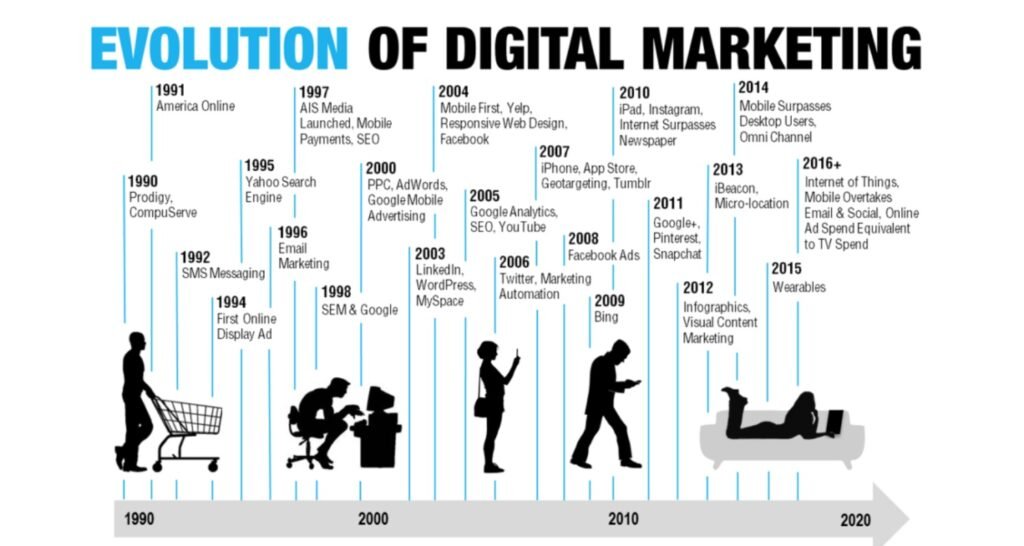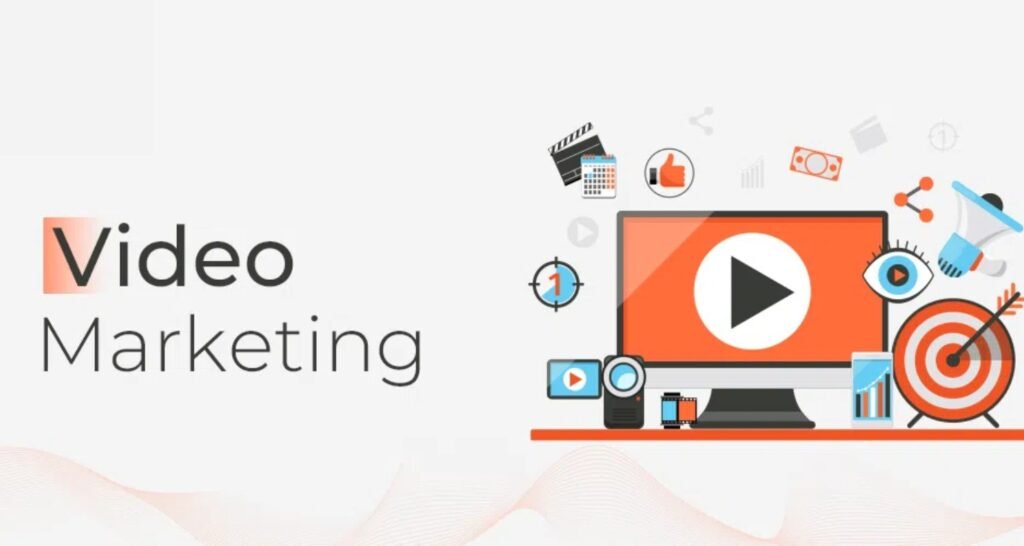
Digital Marketing in the USA: Past, Present, and Future
Digital marketing today means leveraging digital channels to promote goods and services—a massive, thriving market, especially with the surge in social media use among the current generation. But this industry didn’t just appear overnight. The evolution of digital marketing has been a long journey, from its inception to its current state.
The primary goal of digital marketing is to connect businesses with a target audience interested in their products or services, primarily those spending significant time online. Over the years, digital marketing has continually evolved with the emergence of new technologies and shifting public interests.
Understanding the history of digital marketing is essential for businesses and professionals in this field. It provides a deeper insight into how digital marketing influences and transforms the market.
The Evolution of Digital Marketing in the USA: Past, Present, and Future 1
Genesis of Digital Marketing 2
Content Marketing Revolution 5
Voice Search in Digital Marketing 8
Future Trends in Digital Marketing 9
Genesis of Digital Marketing
The early days of digital marketing trace back to the 1990s, when the Internet’s usage and availability surged, alongside the launch and popularisation of the World Wide Web. These technological advances laid the groundwork for digital marketing.The 1990s revolutionised business marketing and audience interaction, leading to an upward evolution. As Internet access became easier, online advertisements began to appear. Banner ads were the first form of digital marketing, opening a new channel that was geographically and temporally flexible.

The Dot-Com Era
The dot-com era, from the late 1990s to early 2000s, marked a significant revolution in digital marketing. The rapid expansion and speculation in the online domain led to a surge in internet startups and skyrocketing investments. Businesses began establishing an online presence, seeing the Internet as the future. This era birthed the “dot-com boom,” profoundly influencing digital marketing techniques, particularly Search Engine Optimization (SEO), which aimed to improve website rankings based on popularity. This period also saw the development of innovative strategies to align web content with search engine algorithms.
Social Media Growth
Social media’s evolution, emerging in the early 2000s, has been pivotal in digital marketing. Platforms

like Twitter, Instagram, Facebook, and LinkedIn transformed business-customer interactions from one-way communication to two-way conversations. Social media enabled brands to engage with and understand customers while allowing customers to voice their concerns, fostering real-time connections.
Content Marketing Revolution
The late 2000s witnessed a shift from traditional outbound to inbound marketing strategies, emphasising attracting customers with creative, consumer-centric content. Inbound marketing highlighted the importance of quality content, driving consumer attention and investment in diverse strategies, adding depth and value to traditional methods.
Boom in Mobile Marketing
The 2010s saw the rise of mobile marketing as smartphones became more affordable, opening new channels for marketers. Mobile marketing enabled personalised messaging, enhancing business-customer relationships. Brands created apps for interactive customer platforms, allowing shopping, deals, and appointments, while also using algorithms to understand customer preferences.
Video Marketing
By the late 2010s, video content became central to digital marketing. Platforms like YouTube, Instagram, and TikTok became vital for engaging the 21st-century audience, with videos preferred over other content forms due to their ability to simplify complex ideas and capture attention. Videos make product benefits clear, boosting consumer interest.

Influencer Dominance
The rise of video content has coincided with the growth of social media influencers, who significantly enhance product visibility and sales. Influencers provide credibility, making consumers more likely to trust brands endorsed by those they follow online. Their authenticity and follower count determine product visibility, altering consumer behaviour and insights.
Voice Search in Digital Marketing
Voice search is revolutionising digital marketing by making online searches easier. Businesses have updated their interfaces to accommodate voice search, which has become prevalent, with people preferring speaking over typing. Voice commands simplify tasks, making users more comfortable with digital interactions. Voice searches are more personalised, enhancing user engagement with more natural language queries.

Future Trends in Digital Marketing
With digital marketing’s evolution, the future likely includes AI integration. Many marketers are adopting AI tools, saving time and resources. Text-to-video content creation is emerging as a prominent AI tool, transforming digital marketing strategies.
Conclusion
Staying updated with digital marketing developments is crucial for success. Whether part-time or full-time, understanding its evolution is essential. With AI’s growing role, the industry will evolve even faster. Keep abreast of trends and implement them to avoid obsolescence. Understanding digital marketing’s evolution will help you stay ahead in the future.





